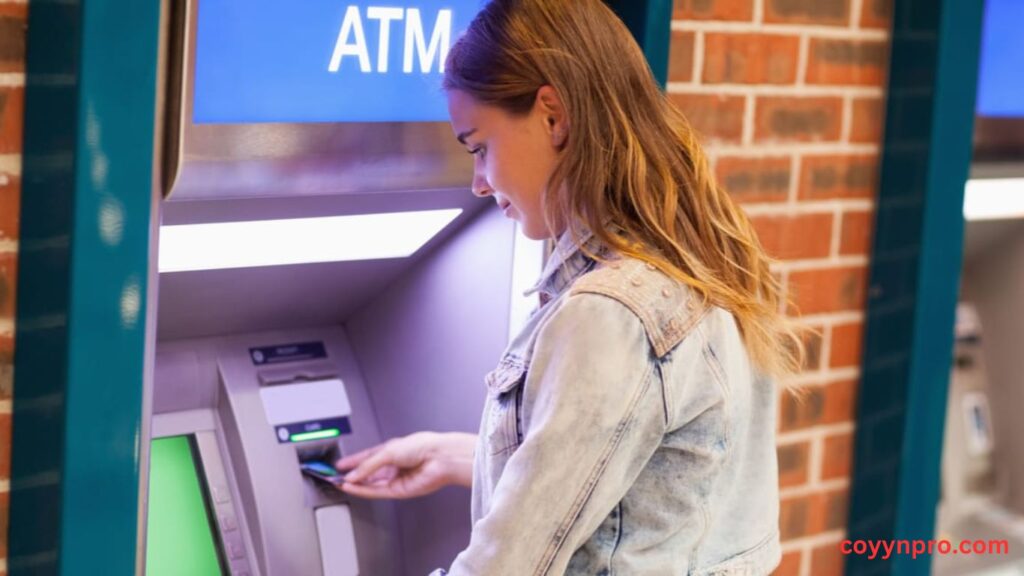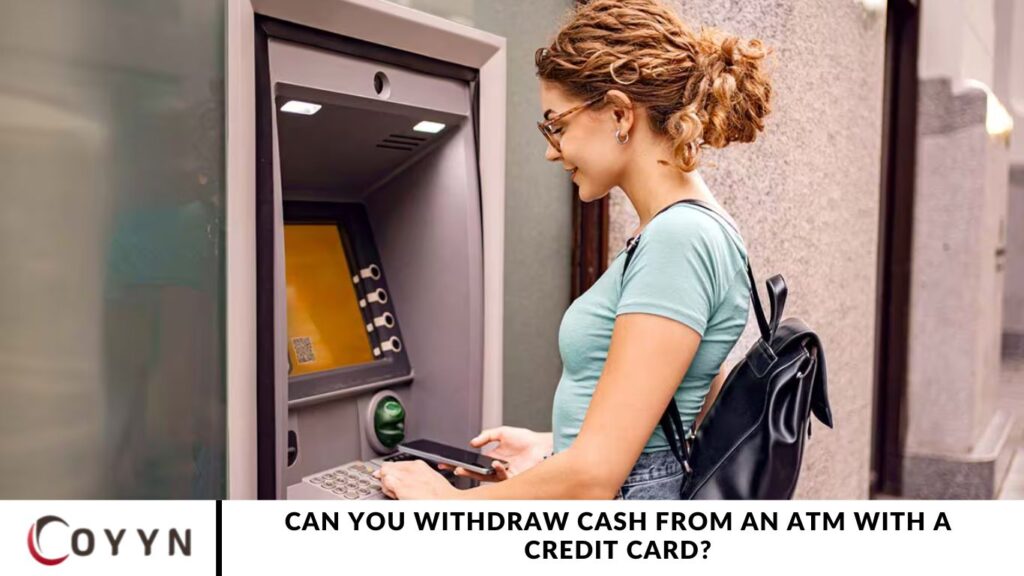Managing your finances can be challenging, and you might be wondering, “Can I use a credit card at an ATM?” Whether it’s for an emergency or convenience, it’s crucial to understand how credit card cash advances work, the associated fees, and alternative options that may be more cost-effective. This comprehensive guide breaks down everything you need to know to make informed financial decisions.
How to Use a Credit Card at a Cash Machine
Yes, you can withdraw cash from an ATM using a credit card, but the process differs from using a debit card. Here’s what you need to know:
Steps for a Cash Advance
- Insert Your Card: Insert your credit card into the ATM, just like you would with a debit card.
- Enter Your PIN: Use the PIN linked to your credit card. If you don’t have one, contact your card issuer to set it up.
- Select the Amount: Enter the amount you want to withdraw, keeping in mind your card’s cash advance limit.
- Collect Your Cash: Once the transaction is approved, take your cash.
- Pro Tip: Always check your credit card’s cash advance limit before withdrawing, as it’s typically lower than your total credit limit.
Important Considerations
- Fees: Expect a cash advance fee, typically ranging from 3% to 5% of the transaction amount.
- Interest Rates: Interest starts accruing immediately, often at rates of 20% or higher.
Limits: Your cash advance limit is usually lower than your total available credit limit.
Benefits of Using Credit Cards at ATMs
While costly, cash advances can be beneficial in specific situations:
Emergency Cash Access
Cash advances can be a lifesaver when other payment methods aren’t an option, especially during emergencies like medical situations or travel crises.
Global Accessibility
Credit cards are widely accepted at ATMs worldwide, making cash advances a convenient option for international travelers.
Quick Cash
You can access cash or a cash advance within minutes without visiting a bank or relying on others.
Risks and Drawbacks of Credit Card Cash Advances
While cash advances offer convenience, they come with significant drawbacks:
High Fees
Cash advance fees range from 3% to 5% of the amount withdrawn, and ATM operators may charge additional fees.
Immediate Interest
Unlike purchases, cash advances start accruing interest immediately, usually at rates exceeding 20%.
Impact on Credit Score
Cash advances consume a significant portion of your credit limit, which can increase your credit utilization ratio and potentially lower your credit score.
How to Minimize Fees and Costs
If you must use a credit card at an ATM, consider these strategies to minimize the financial impact:
- Avoid Frequent Withdrawals: Limit cash advances to emergencies only.
- Pay Back Quickly: Repay the cash advance as soon as possible to reduce interest charges.
- Choose Low-Fee Cards: Some credit cards offer lower cash advance fees or promotional rates.
- Understand the Terms: Review your card’s cash advance terms to avoid unexpected fees.
Credit card cash advances differ significantly from debit card withdrawals. Credit cards typically come with high fees, including cash advance fees and ATM charges, while debit card withdrawals usually incur minor to no cost. Interest on credit card cash advances begins accruing immediately, often at rates over 20%, whereas debit card withdrawals do not accumulate interest. Additionally, using a credit card for cash advances can impact your credit score due to increased credit utilization, while debit card withdrawals do not affect your credit score.
Alternatives to Credit Card Cash Advances
Before opting for a cash advance, consider these alternatives:

- Use a Debit Card: No interest or fees—withdraw money directly from your checking account.
- Peer-to-Peer Apps: Need to send money quickly without withdrawing cash? Apps like Venmo, Zelle, or PayPal offer instant transfers.
- Personal Loans: For more significant amounts, personal loans typically offer lower interest rates and more flexible repayment terms.
- Emergency Savings: Having a dedicated savings account can often be the most cost-effective way to handle emergencies.
Tips for Safe Transactions
To protect yourself and your money, follow these steps:
- Protect Your PIN: Choose a hard-to-guess PIN and cover it when entering it at an ATM.
- Verify the ATM: Use ATMs in well-lit, secure locations, preferably attached to reputable banks.
- Monitor Statements: Regularly review your credit card statements to ensure all transactions are legitimate.
- Stay Vigilant: Always be cautious and avoid sharing information that could lead to fraud or theft.
Frequently Asked Questions
Can I use my credit card at any ATM?
Yes, most ATMs allow you to use a credit card to withdraw cash, as long as the ATM supports credit card transactions.
Are there fees for withdrawing cash from an ATM using a credit card?
Yes, credit card cash advances typically have fees ranging from 3% to 5% of the withdrawal amount.
Is there a limit to how much I can withdraw from an ATM using my credit card?
Yes, your credit card’s cash advance limit is usually lower than your total credit limit, so there is a maximum amount you can withdraw.
How soon will interest start accumulating on a credit card cash advance?
Interest starts accruing immediately on cash advances, unlike regular purchases, which often have a grace period.
Are the fees for using an ATM with a credit card the same as using a debit card?
No, cash advances on a credit card generally have higher fees and interest rates than debit card withdrawals, which usually have minimal or no fees.
What is the interest rate for a credit card cash advance?
Interest rates on credit card cash advances are typically higher than regular purchases, often exceeding 20%.
Can I use any credit card for cash advances?
Most credit cards allow cash advances, but it’s important to check your card’s terms and conditions to verify eligibility and understand the fees and limits.
Conclusion
While it is possible to withdraw cash from an ATM using a credit card, it is essential to understand the associated costs and risks. Credit card cash advances come with high fees, immediate interest charges, and a lower withdrawal limit compared to regular credit purchases. Additionally, frequent use of cash advances can negatively impact your credit score due to increased credit utilization. Suppose you find yourself needing cash in an emergency. In that case, it’s essential to explore other alternatives, such as using a debit card, peer-to-peer payment apps, or personal loans, to avoid costly fees and interest rates. Always weigh the pros and cons before opting for a credit card cash advance and ensure that you’re fully aware of your card’s terms and conditions.


